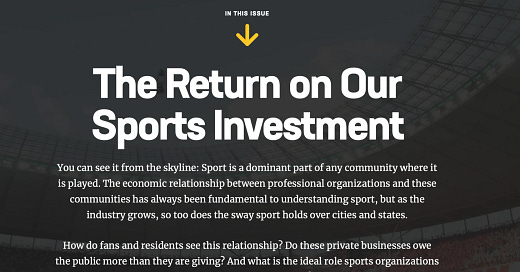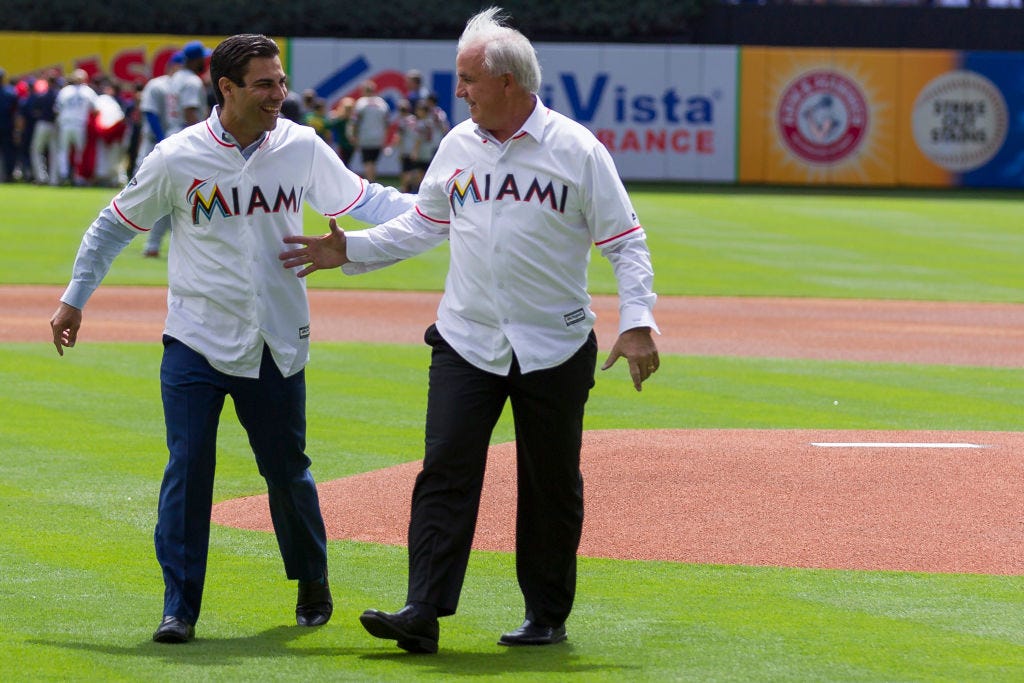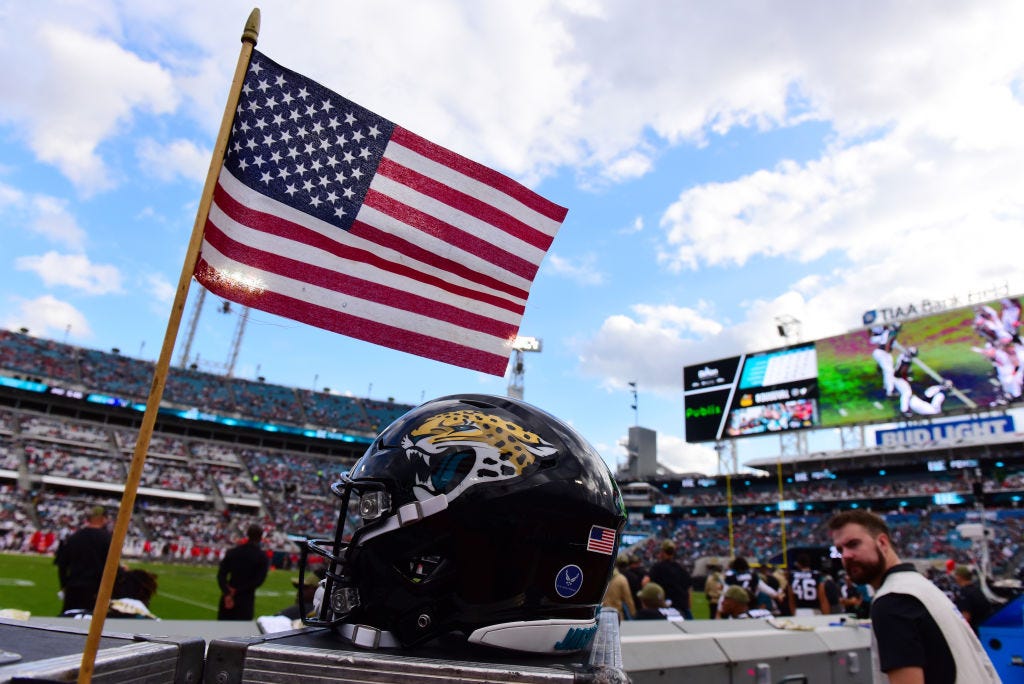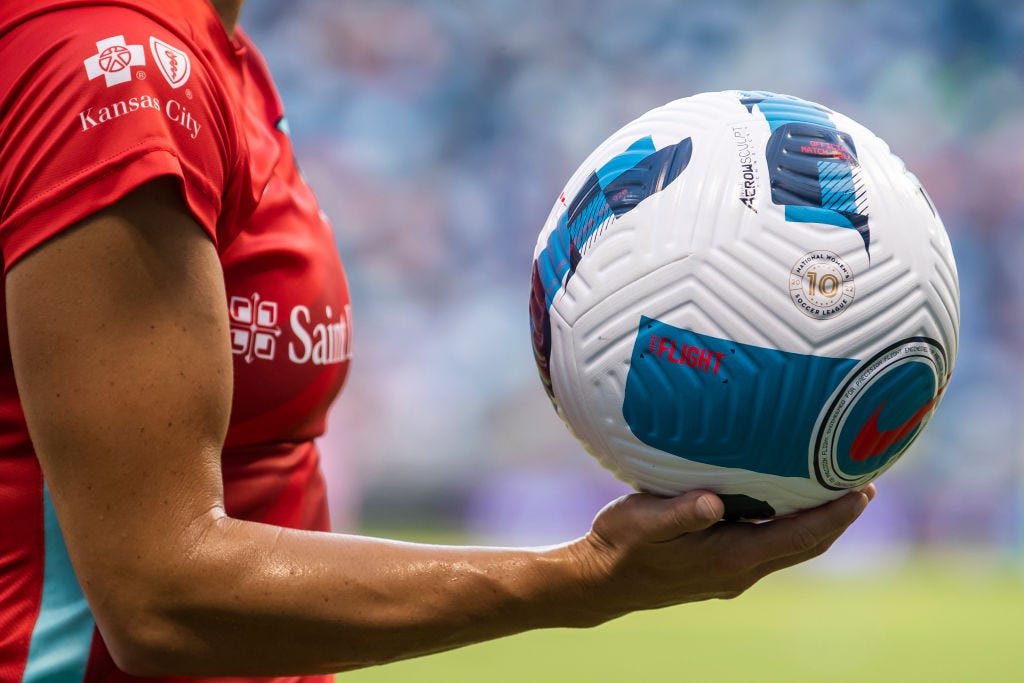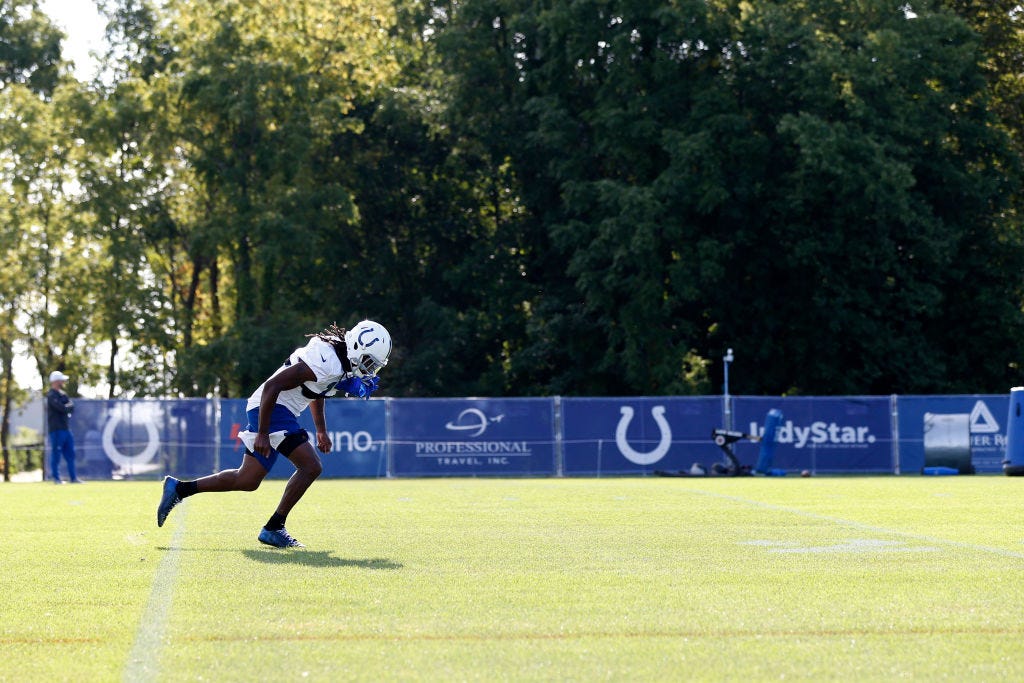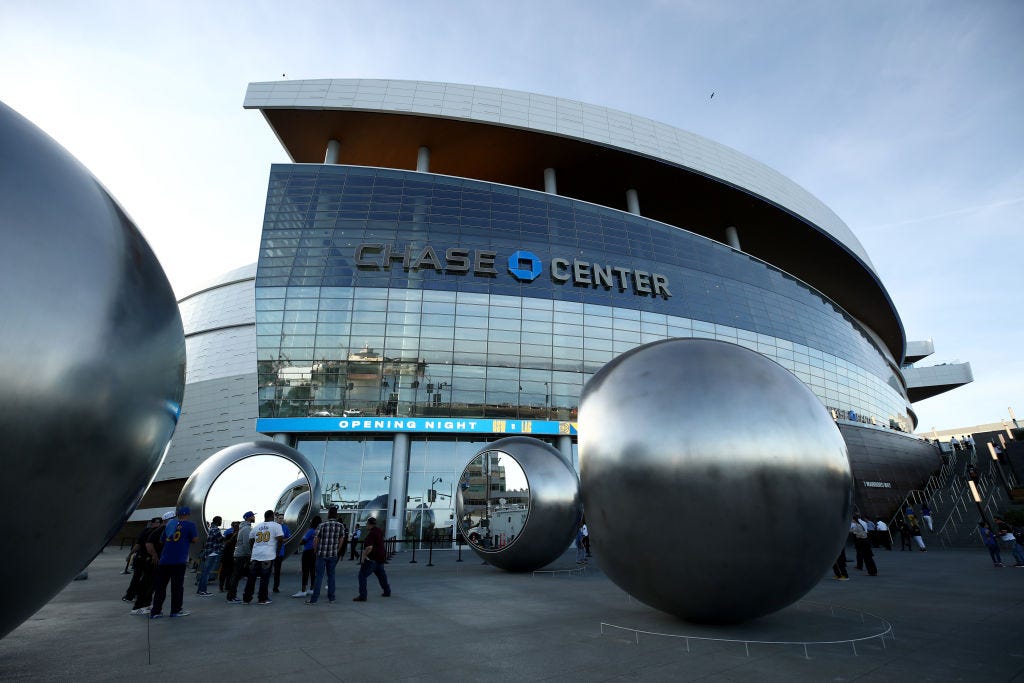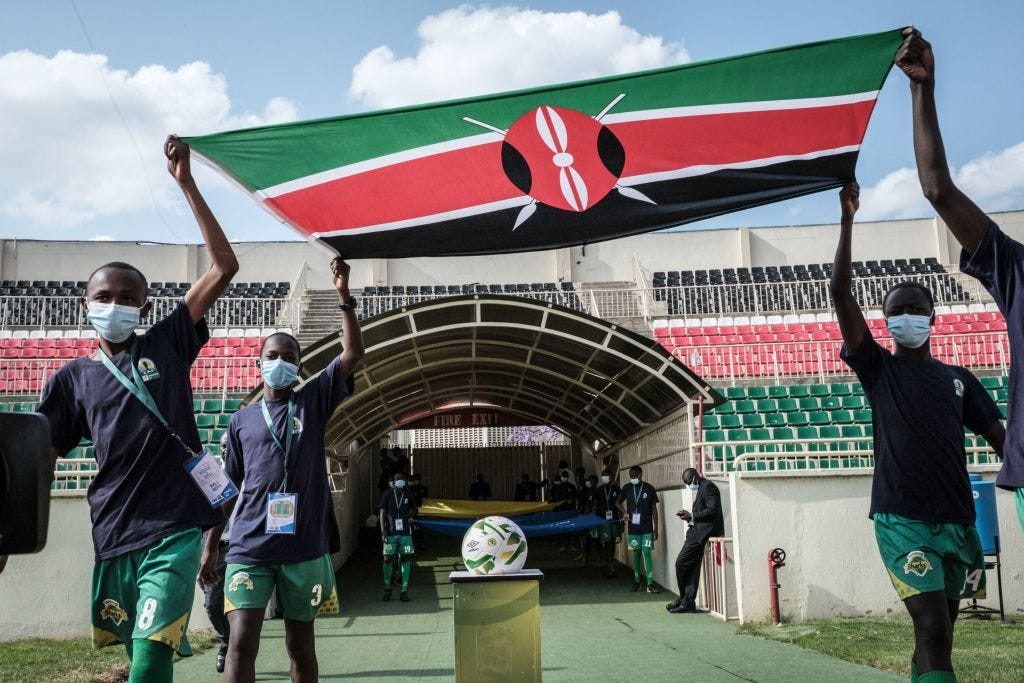Global Sport Matters: The Return On Our Sports Investment Issue (Part II)
Why democracy dies in stadium subsidies, how OHSA can make a safer NFL, the case for funding women's facilities, public payoffs for youth mega-complexes, and sports development in the U.S. and Kenya.
Welcome to Hreal Sports, a newsletter written by Patrick Hruby about sports things that don’t stick to sports. Sign up and tell your friends!
Welcome back! I’m delighted to share the second set of stories for the June issue of Global Sport Matters, the digital publication of the Global Sport Institute at Arizona State University. For those of you who are unfamiliar with our work, we cover a wide range of outside the lines, sports and society topics though original research and reporting, and via podcasts, live events, standalone articles, and monthly themed issues.
Our latest issue is devoted to The Return On Our Sports Investment. From spending billions on sports stadiums to exempting leagues and organizations from pesky impediments such as antirust laws and OSHA, the United States invests an awful lot of public support into the private business of sports; in return, we generally receive solemn promises that our favorite teams won’t, like, move to Las Vegas. For now.
But how do fans and residents feel about this arrangement? What is the ideal role sports organizations should play in communities? Do these organizations owe the public more than they are giving? Should they be owned by the public in the first place?
To put things more succinctly: We, The People have been extremely generous. What should we expect in exchange?
Our issue attempts to provide answers—from economists and scholars who have studied these questions here and abroad, from reporters on location in Tennessee and Germany, and from an Arizona State University Global Sport Institute nationwide public opinion poll. Links and summaries are below for stories on why American democracy dies in stadium subsidies, how OHSA could make a safer NFL, the case for increasing public funding for women's sports facilities, public payouts—and questionable payoffs—for youth mega-complexes, and using sports to kickstart urban development in the U.S. and Kenya. Hope you enjoy—and if you missed Part I, just click here!
“End Runs: Why Politicians Subsidize Sports Stadiums Despite a Lack of Popular Support,” by Neil deMause.
Time and again, U.S. cities dole out heaps of money for sports facilities despite consistent public sentiment against such deals. Why do we live in a stadium subsidy republic, and not a democracy? As stadium subsidy expert—he literally co-wrote the book!—Neil deMause explains, a combination of lobbying influence, the threat of relocation, and spending power means teams and their rich owners don't actually have to worry about what locals want.
When University of Colorado Denver public affairs professor Geoffrey Propheter looked at 125 proposed sports subsidies from 1982 to 2013, he found that voters approved stadium subsidy deals only about half the time, even with team owners and their allies generally spending big on ad campaigns to get them passed.
When it was just up to local politicians, meanwhile, the success rate soared to 96 percent.
So, is this just how the sausage gets made in 21st-century America? After all, U.S. cities are littered with publicly-funded, non-sports private projects that were passed regardless of public opinion. Virginia’s Amazon HQ2 project, aided by nearly $800 million in state spending, comes to mind. Or is there something special about sports that inspires politicians to take matters into their own hands and keep them there?
“That’s something I’ve been grappling with, literally, for decades,” says Villanova University sociology professor Rick Eckstein.
In 2003, Eckstein and co-author Kevin Delaney published Public Dollars, Private Stadiums, a comparative study of why some cities are quicker to funnel money to sports projects than others. Their main finding: Cities with more cohesive “growth coalitions” — assemblages of politicians and business leaders who share an ideology and social circles — are more likely to swiftly approve public subsidies.
Nearly two decades later, Eckstein says he still believes that sports subsidies are “just another boondoggle of many.” But he also says he and Delaney may have downplayed the ways in which stadium decision-making can be even more profoundly undemocratic than, say, the public process for auto plants.
“Sports matters a lot,” he says. “They’ve got their own private PR departments in the local media. They’ve got that whole sports section dedicated to parroting the party line that comes from the teams and the boosters.”
“How a Government Partnership Could Make the NFL Safer,” by Adam Finkel.
Repetitive brain trauma has been strongly associated with the neurodegenerative disease known as chronic traumatic encephalopathy (CTE). To reduce CTE risk in the National Football League, argues a former administrator with the U.S. Occupational Safety and Health Administration, OSHA could partner with the league to create an enforceable code of practice that would govern pro football like other workplaces and better protect players.
Generally speaking, when an employer or industry is found to be imposing unreasonable health risks on its workers or the general public, our government takes notice. The reason that polluted rivers don’t catch on fire any more or that thousands of babies in Europe – but none in the U.S. – have lived for 60 years with a constellation of serious skeletal defects from a drug taken in pregnancy is that regulatory agencies have crafted what people in my field call “those wise restraints that make us free.”
Smart regulations, designed with broad participation by those affected, can reduce intolerable risks at little or no cost to the economy. Since 1970, OSHA has been responsible for writing and enforcing regulations designed to guarantee, as far as practicable, that no worker “will suffer diminished health, functional capacity, or life expectancy as a result of his work experience.” In practice, this means requiring that certain electrical equipment be “locked out and tagged out” when workers are performing maintenance on or near said equipment, the better to prevent electrocutions or getting carried into danger if a conveyor belt suddenly starts up. It means writing concentration limits for roughly 20 substances, like asbestos, that have been linked to grave diseases in workers who have been exposed to them. It means inspecting about 55,000 worksites annually and issuing civil penalties to employers who have violated one or more of OSHA’s standards.
But, as of now, OSHA does not influence how the NFL treats its workers with regard to the risk of CTE. Nobody from the agency is inspecting Washington Commanders training camp for safety standard violations – because there are no standards. However, there are good reasons to think that OSHA could – and should – be making an effort to reduce CTE risk in pro sports.
“KC Current Stadium Deal Sets a New Precedent for Women's Sports,” by Tarlan Chahardovali.
Though Americans remain torn on the idea of public financing of stadiums, the Kansas City Current's negotiations with the city over a small portion of funding for a stadium—and ownership's hefty spend so far—exemplify the relatively low cost and high impact that broader investment in women's sports facilities can have. In this piece, scholar Tarlan Chahardovali argues that while men’s sports have long enjoyed significant taxpayer subsidies, women’s sports have been shut out—and unfairly so.
It is worth noting that if the burden of stadium construction or renovation is to be put on the public, then it is arguably women’s sports’ turn to reap the private financial rewards. The soccer stadiums and basketball arenas that women need are much smaller than most men’s stadiums such as those we see in the NFL or MLB, requiring smaller footprints and, as we see in the case of the KC Current’s $6 million request, a fraction of the cost of what has gone toward men’s professional sports stadiums.
To put the Current’s $6 million tax credit request in perspective, the state of New York agreed this year to spend $850 million to build a new stadium for the Buffalo Bills, a cost that, according to the sports economist Victor Matheson, will actually end up closer to $1.1 billion given the real estate tax exemptions and other benefits that the Bills are likely to receive. This is 183 times more than what the KC Current project seeks and over eight times the total cost of the proposed Current stadium.
Simply put, the public subsidies granted to a single NFL team in Buffalo could have built eight professional women’s soccer stadiums without a single private dollar being spent. Perhaps it’s time to stop subsidizing wealthy owners with billion-dollar stadiums in leagues with billion-dollar profits, especially when we know that they do not benefit the communities that fund them. Or, at least, demand more equity in who should benefit from public support.
“Youth Sports Megaprojects Put Cities ‘On the Map,’ But Can They Profit?” by Bob Cook.
Once upon a time, public dollars for facility construction largely were reserved for professional sports. No longer. Youth sports mega-complexes are enjoying a building boom, and local taxpayers are often kicking in behind promises of increased tax and tourist revenue. Are they wise to do so? One of the biggest and most popular complexes, Grand Park in Indiana, highlights the benefits and drawbacks.
Built with $49 million in public money, the Grand Park youth sports complex in Westfield, Indiana, has been smashingly successful at achieving its stated goal: transforming an anonymous town in the Indianapolis exurbs into a tourism magnet.
Westfield originally estimated that Grand Park – a sprawling, 400-acre youth sports complex about four times the size of Vatican City that opened in 2014 – would draw 500,000 visitors annually. In 2022, the city projects that it will draw 2.5 million. When caravans of SUVs stuffed with parents and kids from all over the Midwest and beyond stream into the complex on almost every weekend, Westfield Mayor Andy Cook’s (no relation to the author) original vision to make his city the self-declared “Family Sports Capital of America” sounds less hyperbolic than prophetic.
Moreover, Grand Park’s example has ignited a youth sports building frenzy that, according to Sports Business Journal, accounts for $9 billion spent or committed since 2017, much of that coming from taxpayers. All across America, local governments are pitching in to construct complexes designed to feed the dreams of would-be future sports stars – while also boosting the bottom lines of local hotels, restaurants, and other businesses.
Despite Grand Park’s success, however, Westfield is now trying to get out of the youth sports business. The city has put out a call for bids to either sell Grand Park outright to a private entity or to strike a deal for a public-private partnership.
“How American Sports Facilities Can Better Serve Their Communities,” by Stephanie Gerretsen.
How can cities and communities maximize the benefits they receive in return for their investment in professional sports facilities? Scholar Stephanie Gerretsen explains how with careful and deliberate planning, arenas and stadiums can serve as anchors for mixed-use, hyper-local economic and real estate development.
For decades, mayors, county officials, and governors have cut deals to fund sports facilities and have continued to spend taxpayer dollars as part of their economic development strategies despite the wealth of evidence that these infrastructure projects fail to fulfill the promises of regional economic growth made by state and local government leaders and team owners. Still, real financial benefits for both teams and the public sector are possible.
These benefits can be achieved when a public-private partnership for a professional sport infrastructure project includes a real estate development strategy that can support new neighborhood and community development that is anchored by an arena, ballpark, or stadium. This can be referred to as a sport, hospitality, and entertainment district (SHED).
Recent projects like Milwaukee’s Deer District or Denver’s LODO joined a well-known list of completed projects across many sports nationwide that are also anchored by adjoining real estate. But the most ambitious sport-anchored redevelopment projects may be the redevelopment of Willets Point in Queens, New York, and perhaps the mixed-use development projectproposed by the Meruelo Group LLC, owner of the Arizona Coyotes, which includes the relocation of the National Hockey League team from Glendale in the West Valley to Tempe in central metro Phoenix.
“As Kenya Builds a Middle Class, Sport Stadiums Present Key Urban Development Opportunities,” by Stephanie Gerretsen.
While U.S. pro sports moves through a second wave of stadium deals in the past 30 years, Kenya is using sport facilities to increase national unity and gain political advantages. Could the stadiums also be used to help build a middle class?
As sport continues to become a global industry, interconnected and interdependent, the lessons of one country using sport to anchor urban development can be largely applied to another. With goals to host a future African League of Nations soccer tournament and continue to build a middle class using sport as a key driver of economic activity, Kenya provides a unique case study of how local sport activities can help drive business and community development.
Having spent two and a half years in Nairobi with the United Nations, I came to understand firsthand Kenya’s urban development goals and used data to analyze the country’s capital investment projects and ideal locations for new projects. In having researched the ability of sport facilities to anchor growth in the U.S., I was able to apply these findings in conjunction with the Kenyan government’s plans to provide insight into what might work best as the growing country moved toward aggressive goals to center sport in its economy and culture.
This has been Hreal Sports, a newsletter written by Patrick Hruby about sports things that don’t stick to sports. If you have any questions or feedback, contact me at my website, www.patrickhruby.net. And if you enjoyed this, please sign up and share with your friends.

